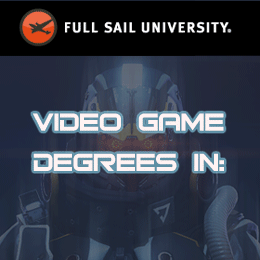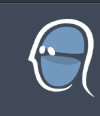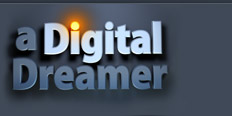|
Graphic Design Interviews
There are some things in life that make our palms go sweaty and minds go numb, but we have to do them. Explaining to the officer why you were speeding in a school zone is one of those times. ; ) The other time is the job interview...
What to Know
Going into an interview, it's a good idea to have as much background knowledge of the company as you can. Knowing exactly what they do and other details will impress the employer and show them that you take initiative and you have an interest in the company.
 If you know who you talked to specifically to get the interview, make sure to use the name. Generally you will learn the name by talking to the person setting up the interview. Make SURE you write down the name exactly. Ask whom ever it is you speak with to repeat the name of the person if you missed it the first time. You don't want to walk to the receptionist and ask for Saul Longkey, when you really should be asking for Paul Longly. : ) If you know who you talked to specifically to get the interview, make sure to use the name. Generally you will learn the name by talking to the person setting up the interview. Make SURE you write down the name exactly. Ask whom ever it is you speak with to repeat the name of the person if you missed it the first time. You don't want to walk to the receptionist and ask for Saul Longkey, when you really should be asking for Paul Longly. : )
What to Bring
Besides yourself, there are some things that you should bring along to a job interview.
1) Two Resumes: Why should you bring 2 resumes to the interview? One is for the employer, and the other is for yourself. You might have sent a resume to the employer before the interview, (just to get the interview) but resumes get lost, creased, ripped, and so on. You might have sent the employer a faxed resume, which is often harder to read and looks sloppy. Regardless, it's nice to be able to offer the interviewer a nice fresh clean copy if they need or want one. The other copy is for yourself for your own reference. It just makes it easier to both be looking at the same resume and to refer to certain points and know what both parties are looking at. It also helps you not get lost if you freeze up when they ask something about your past. Don't laugh. I've done it before, as have others. : )
 2) A Clipboard, Pen, and Paper (Or tablet if you can keep up with taking notes): Have this ready so you can take notes during the interview. The whole interview process is a learning experience for both sides. Write down important things like hours, what they expect, wages, and that kind of thing. It's silly to get an answer about something and then forget what they said about it and have to ask them again at a later time. Have potential questions written down before the interview so you don't forget to ask them. It's easy to forget a question or two when you are in an intense situation like an interview. 2) A Clipboard, Pen, and Paper (Or tablet if you can keep up with taking notes): Have this ready so you can take notes during the interview. The whole interview process is a learning experience for both sides. Write down important things like hours, what they expect, wages, and that kind of thing. It's silly to get an answer about something and then forget what they said about it and have to ask them again at a later time. Have potential questions written down before the interview so you don't forget to ask them. It's easy to forget a question or two when you are in an intense situation like an interview.
3) Your "Drop Off" Portfolio and Your "Keep Yourself" Portfolio: Huh? 2 Portfolios? Generally it's a good idea to have some sort of portfolio that you can mass distribute without asking for it back, and then one that is higher quality that you keep yourself. Often students will give away DVDs to employers, and then bring in a nice print portfolio that shows things off in a clean and personal way. They can give the DVD to the employer to keep and refer to, but take home the print portfolio once they have presented it personally at the interview. Well done print portfolios can cost an arm and a leg, so you don't want to be leaving this kind of thing in a huge pile on someone's desk. Especially if you have loads of desks that your portfolio should be sitting on.
Presentation
Presentation is everything. How you present yourself is one of the biggest factors in landing or losing a job in a job interview. Here are a few tips for presenting well.
1) Dress For It: Coming into an interview with sloppy clothing will speak volumes to the employer. It tells them that you are not taking the interview, and therefore the job or company seriously. Even if the workplace is a laid back environment, dress sharply to show that you care and are a professional. If they hire you and the dress code is lax, THEN dress down. But never for an interview. It's way better to be overdressed than underdressed. Be neatly groomed. Get a haircut if need be, and have a clean, sharp look. Yeah, I know that some of you with pierced nipples, pink hair, and tattoos on your forehead have been getting jobs too, but in general, this is a good idea. : )
2) Body Language: How you present yourself also includes body language. Try not to slouch or hunch. Generally the interviewer will offer a hand for a handshake. Make sure your grip is firm. Even something as minor as a handshake can shape the way an interview goes. A firm handshake shows that you are eager, responsive, and are confident in yourself and what you have to offer. Take a seat when it is offered or seems obvious. Sit up straight and sit square to the employer. Don't rock back and forth or sit on your hands. Just try and relax. Smiling is a good thing, and laugh at any jokes the employer throws at you. (That is unless you're one of those laughers that feels the need to snort. Please. Spare us.). Eye contact is huge. Try and keep eye contact for most of the time, but also make sure to pay attention (with your eyes) to what ever they may be showing you. Looking at the person shows that you are attentive and a good listener. I know it can be nerve racking for some to look at someone face to face and tell them about yourself, but it really is important to try and do this instead of looking away somewhere or staring down at your hands.
Make sure to also check out:
Graphic Design Schools
Picking the Right Graphic Design School
Graphic Design Job Descriptions
Illustration Jobs
Layout Artist Jobs
The Graphic Designer Salary
|




